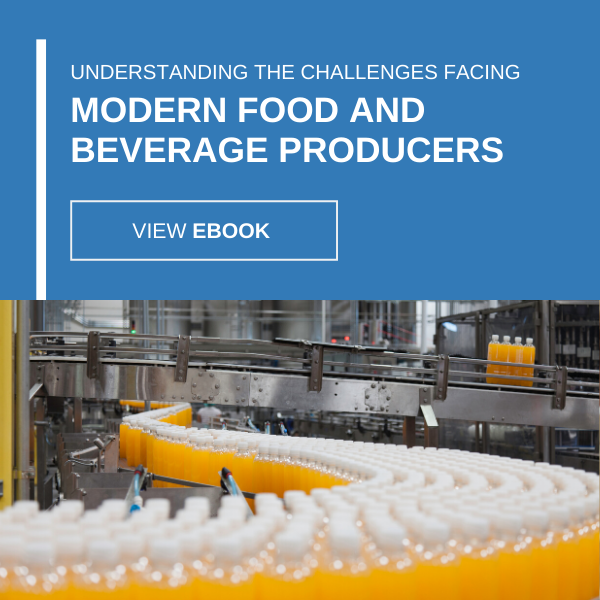-
Subscribe to Blog:
SEARCH THE BLOG
CATEGORIES
- Aerospace
- Asset Maintenance
- Automotive
- Blog
- Building Products
- Case Studies
- Chemical Processing
- Consulting
- Food & Beverage
- Forestry Products
- Hospitals & Healthcare
- Knowledge Transfer
- Lean Manufacturing
- Life Sciences
- Logistics
- Manufacturing
- Material Utilization
- Metals
- Mining
- News
- Office Politics
- Oil & Gas
- Plastics
- Private Equity
- Process Improvement
- Project Management
- Spend Management
- Supply Chain
- Uncategorized
- Utilities
- Whitepapers
BLOG ARCHIVES
- July 2024 (4)
- June 2024 (3)
- May 2024 (3)
- April 2024 (4)
- March 2024 (3)
- February 2024 (4)
- January 2024 (5)
- December 2023 (2)
- November 2023 (1)
- October 2023 (6)
- September 2023 (3)
- August 2023 (4)
- July 2023 (2)
- June 2023 (3)
- May 2023 (7)
- April 2023 (3)
- March 2023 (3)
- February 2023 (5)
- January 2023 (6)
- December 2022 (2)
- November 2022 (5)
- October 2022 (5)
- September 2022 (5)
- August 2022 (6)
- July 2022 (3)
- June 2022 (4)
- May 2022 (5)
- April 2022 (3)
- March 2022 (5)
- February 2022 (4)
- January 2022 (7)
- December 2021 (3)
- November 2021 (5)
- October 2021 (3)
- September 2021 (2)
- August 2021 (6)
- July 2021 (2)
- June 2021 (10)
- May 2021 (4)
- April 2021 (5)
- March 2021 (5)
- February 2021 (3)
- January 2021 (4)
- December 2020 (3)
- November 2020 (3)
- October 2020 (3)
- September 2020 (3)
- August 2020 (4)
- July 2020 (3)
- June 2020 (5)
- May 2020 (3)
- April 2020 (3)
- March 2020 (4)
- February 2020 (4)
- January 2020 (4)
- December 2019 (3)
- November 2019 (2)
- October 2019 (4)
- September 2019 (2)
- August 2019 (4)
- July 2019 (3)
- June 2019 (4)
- May 2019 (2)
- April 2019 (4)
- March 2019 (4)
- February 2019 (5)
- January 2019 (5)
- December 2018 (2)
- November 2018 (2)
- October 2018 (5)
- September 2018 (4)
- August 2018 (3)
- July 2018 (2)
- June 2018 (4)
- May 2018 (3)
- April 2018 (3)
- March 2018 (2)
- February 2018 (2)
- January 2018 (1)
- December 2017 (1)
- November 2017 (2)
- October 2017 (2)
- September 2017 (1)
- August 2017 (2)
- July 2017 (2)
- June 2017 (1)
- April 2017 (3)
- March 2017 (3)
- February 2017 (2)
- January 2017 (2)
- December 2016 (2)
- November 2016 (4)
- October 2016 (4)
- September 2016 (3)
- August 2016 (6)
- July 2016 (4)
- June 2016 (4)
- May 2016 (1)
- April 2016 (3)
- March 2016 (4)
- February 2016 (2)
- January 2016 (4)
- December 2015 (3)
- November 2015 (3)
- October 2015 (1)
- September 2015 (1)
- August 2015 (4)
- July 2015 (6)
- June 2015 (4)
- May 2015 (7)
- April 2015 (6)
- March 2015 (6)
- February 2015 (4)
- January 2015 (3)
CONNECT WITH US
Tag Archives: Regulations
All businesses retain value one of two ways: capturing revenue at the right moment or avoiding costly risk before it hits company coffers. What opportunities and dangers on the horizon should U.S. glass manufacturers strive toward or veer away from?
1. Mind energy efficiency innovations and their industrial applications
Far and away, glass manufacturing is one of the most energy-intensive industries in the industrial sector. According to research from the Energy Information Administration, U.S. glassmakers consume about 200 trillion British thermal units of energy annually, primarily derived from 143 billion cubic feet of natural gas. A quarter of total consumption, however, comes from electricity.
The EIA estimates energy reductions to melting, refining, and possibly forming processes, depending on the product under manufacture, could yield a sizeable return of 20 to 25 percent. Companies interested in energy-efficient operations should watch out for progress in science surrounding direct current field technology, which, among other things, lowers the melting point of glass for more cost-effective production.

Is energy efficiency on the horizon for glass manufacturing?
2. Envision a world with stricter glassmaking regulations
Last year, glass producers across the country were the subjects of federal scrutiny after the Environmental Protection Agency caught several companies using highly toxic materials to tint their products. More to the point, these facilities also lacked the appropriate filtering and ventilation technology to protect workers, the surrounding neighborhoods and the environment from the toxic, even carcinogenic, byproducts of consumed cadmium and other heavy metals.
Time will tell what will happen in the aftermath of this discovery. Current political ambiguity has pushed the matter off the EPA’s plate for now. However, glassmakers everywhere should take heed while there’s still time. What regulators find when the investigation reopens could spur new oversight and mandates throughout the industry. Are your operations agile enough to accommodate possible changes? Does your business possess enough capital to invest in additional safety measures should they be required of you? Will your processes withstand audits from the EPA?
3. Enter new markets with confidence
There’s market share and wallet share, but have you ever heard of “building share”?
No? Well, it’s only a matter of time before this concept takes off. As the U.S. toys with entrance into a new era of infrastructure spending and widespread construction projects, glass manufacturers must follow the innovative trends set forth by sister industries like concrete and steel to grow more valuable in the eyes of developers and contractors. The next architectural generation will define itself through greener, more energy-conscious building materials.
For glassmakers, this means not only consuming energy more efficiently, but also diversifying product portfolios and creating valuable partnerships to capitalize on offerings like photovoltaic glass, which, when installed, converts solar energy into usable electricity. In 2015, customers around the world bought 580 million square meters of PV glass, according to RnR Market Research.
In addition, many glass manufacturers have also begun formulating smart glass, which becomes more transparent or opaque on command. By restricting or exploiting direct sunlight and its heat, buildings enjoy energy cost savings from both lighting and HVAC systems.
With that said, to build long-lasting partnerships with new suppliers, glass manufacturers must demonstrate their operations are up to snuff. Just as important, these same businesses must ensure the vendors they work with won’t hold them back either. Consider both sides when entering into negotiations with suppliers, and never sacrifice a legacy of success for an uncertain future.
4. Train staff for 21st-century duties
In the past 30 years, U.S. manufacturing has lost about one-third of its jobs for myriad reasons, according to the Brookings Institution. Many rightly fear the effect automated glass manufacturing processes will have on employment. The entire industrial sector is currently undergoing a perfect storm of issues, automation among them, that are having a corrosive effect on hiring. This challenge also includes a sizeable swath of retiring baby boomers and difficulty finding eager and highly skilled applicants to fill open positions.
An investment in professional development and training can and should be a viable solution for any glassmaker. All it takes is leveraging human capital in such a way that long-time line workers become next-gen technology leaders. If done right, businesses prevent operational disruption and develop knowledgeable teams with ideal job experience. After all, these workers will already know everything about not only glass production, but what’s unique about glass production at the business that trained them.
However, training is and will forever be an ongoing process. As automated technology advances, so too must the businesses utilizing it. Through cross-functional collaboration and professional consulting, glassmakers should optimize and lean down as best they can to transform wasted costs into investment opportunities in the future of their workforces.
Who knew a little label could cause such a big commotion? Food and beverage labels in the U.S. will become battlegrounds over the next year as the industry reinvents itself in the wake of a new political regime and shifting consumer expectations. How might these changes impact how manufacturers operate?
Recent regulatory rules under the Trump administration
Perhaps the most seismic change of late regarding how all businesses in the U.S. will be regulated, President Trump recently signed an executive order requiring the removal of two federal regulations for every one instated. Should this one-in-two-out rule hold, food and beverage producers may find themselves altering not only how they label food but how they produce it.

A new president means a new approach to food and beverage regulations.
For example, last summer then-President Obama signed a bill mandating the use of labeling for genetically modified foods. However, the bill allowed food and beverage companies to use a QR code on their products instead of an outright designation identifying GMO products. Currently, neither side of the issue is wholly content with the final decision, so the matter will likely come up again for review or restructuring in the near future. But now under the Trump administration, further discussion may have to include a selection of regulations for the proverbial chopping block.
Although Trump’s regulation-loosening executive order may make things easier for affected businesses and their abilities to produce cost-effectively, there’s no arguing these companies will already require lean, streamlined operations capable of flexibility to benefit from changes as they come while still upholding safety and quality standards. And with consumers more focused than ever on what they eat and how it’s processed, labeling could be at the heart of this volatile transition period.
New labels provoke conversations regarding sweeteners
In mid-2016, the FDA updated the ubiquitous nutritional label to both emphasize things consumers should be aware of and include data that had been left off in the past.
According to the FDA website, two changes in particular could greatly affect producers of sugary foods and beverages. First, labels must now include a “declaration of grams and a percent daily value (%DV) for ‘added sugars.'” Second, products containing between one to two servings per package must drop down to one and adjust data accordingly, since many people consume these goods in one sitting.
Most manufacturers will have until mid-2018 to comply. Others that make less than $10 million in annual food sales have until mid-2019. Presumably, many in both camps will spend time this year planning how best to reduce added sugar levels or what alternative sweeteners they could feasibly substitute without altering taste dramatically. Either way, these food and beverage producers will need to rethink raw materials sourcing and chart out new partnerships with suppliers.
This could prove difficult for popular sugar alternatives such as stevia. In early June 2016, U.S. Customs and Border Protection seized shipments of stevia from China because of a ban on imports produced through forced labor, according to Fortune. In giving up straight sugar, F&B manufacturers may be forced to seek out a more transparent means of managing its supply chain and a long supplier vetting process. These could prove excellent opportunities to simplify these processes as best as possible for all raw materials involved in production.





